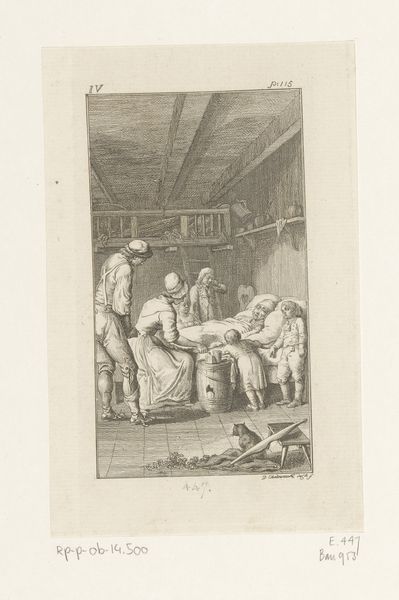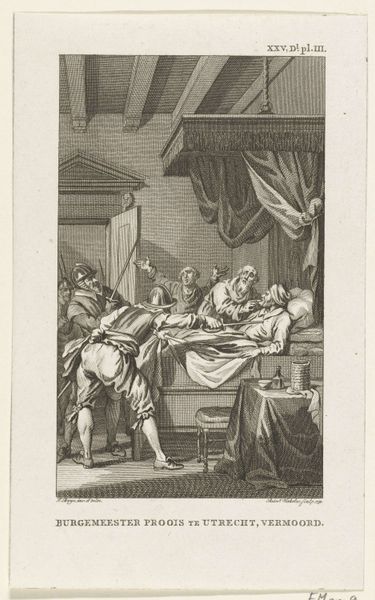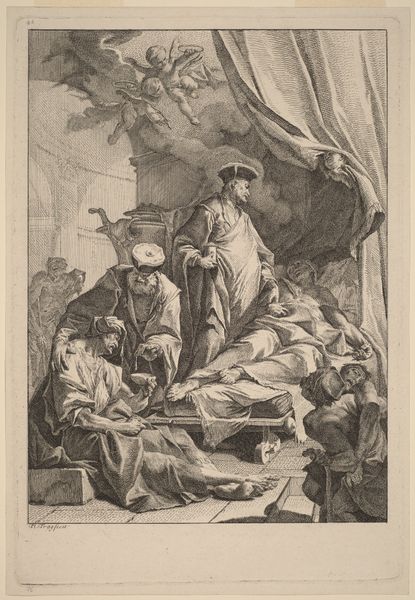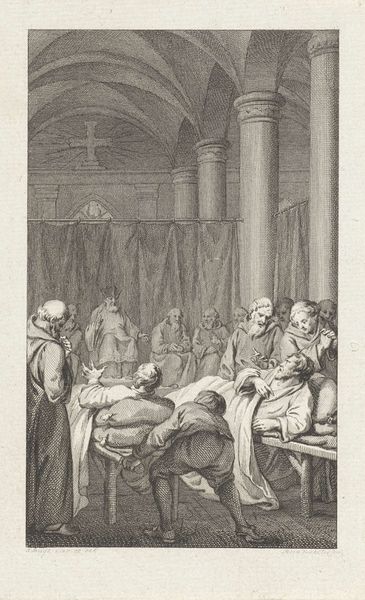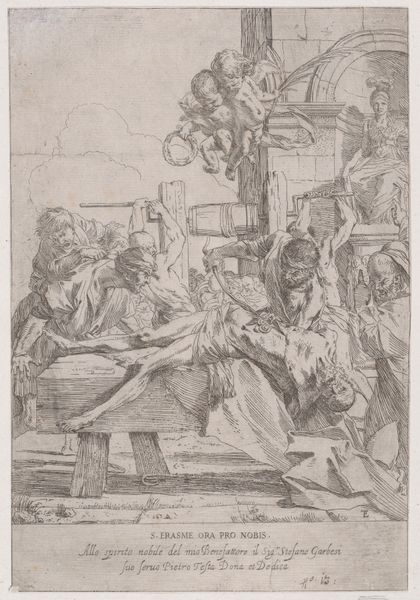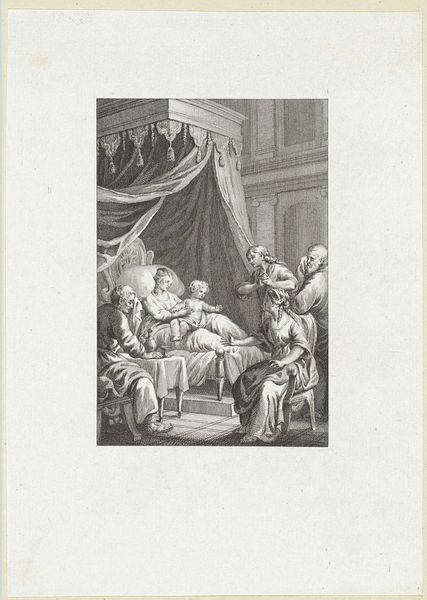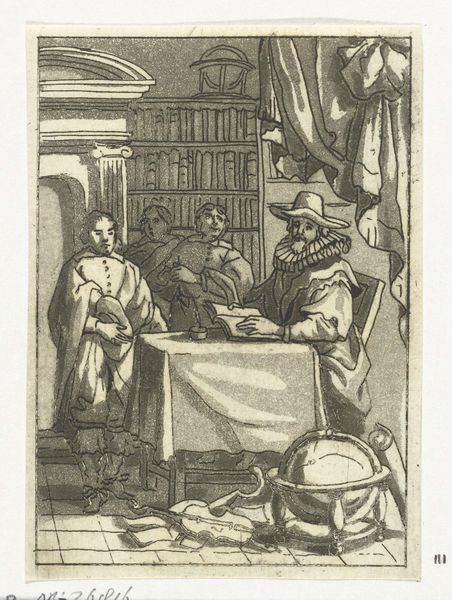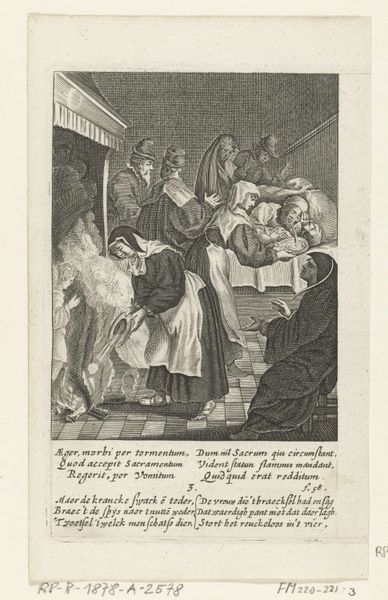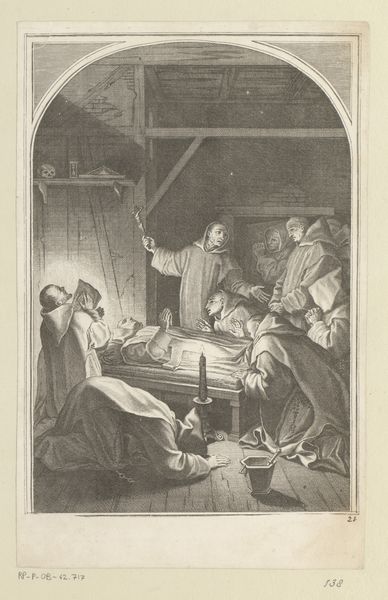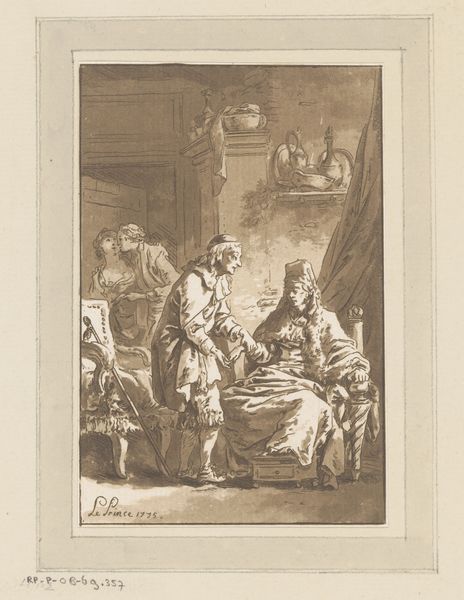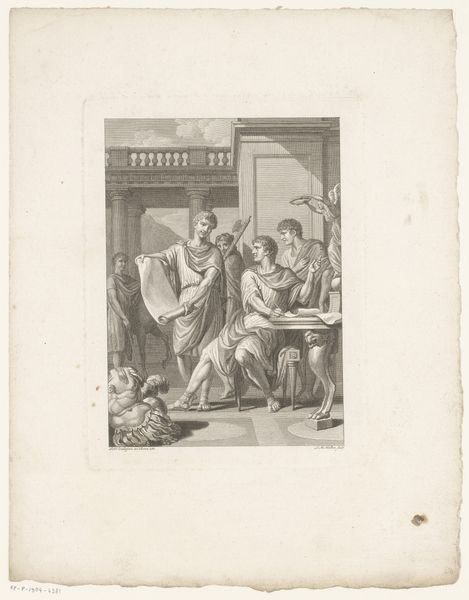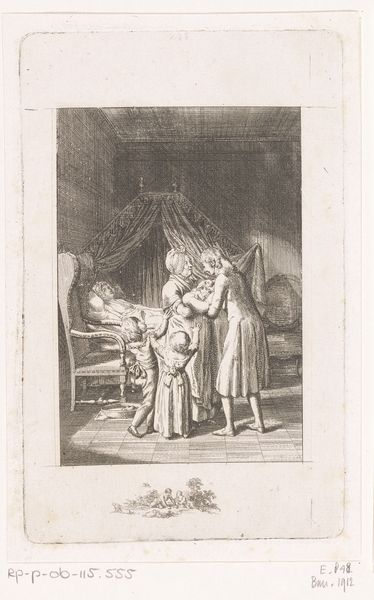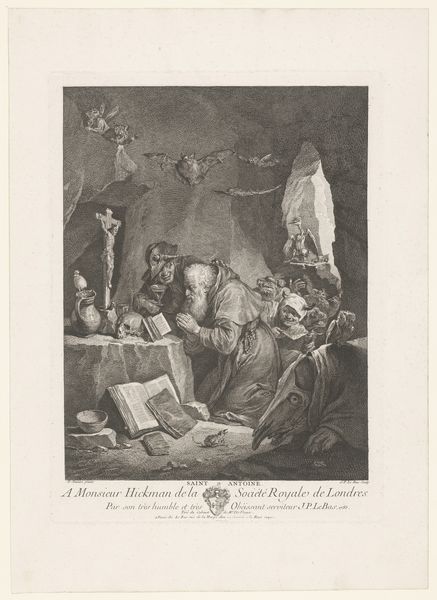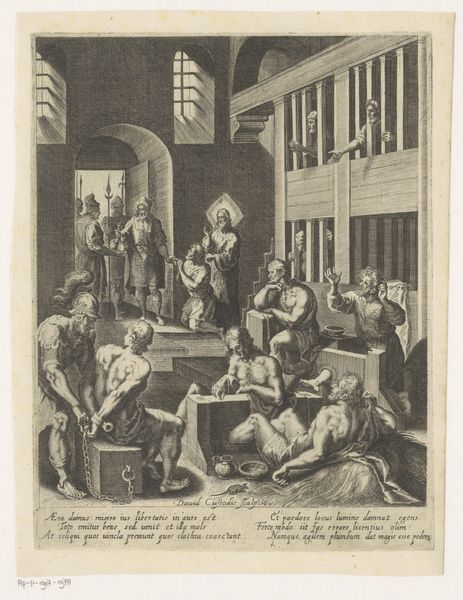
engraving
#
portrait
#
baroque
#
old engraving style
#
figuration
#
line
#
history-painting
#
engraving
Dimensions: height 309 mm, width 207 mm
Copyright: Rijks Museum: Open Domain
Curator: What a scene. At first glance, this piece hits you right in the gut, doesn't it? Editor: It's stark, even severe. I'm immediately struck by the visible process, all those precise etched lines, carefully rendered, they're really carrying the weight here. Given that this is "Dood van Raymond Diocrès," or "Death of Raymond Diocrès", by François Chauveau, dating from sometime between 1623 and 1676, maybe the starkness is intentional. Curator: Intention dances in every carefully laid line, wouldn't you say? Look at how the light falls, directing your eye. It feels as if the whole room sighs with grief. There's such tangible emotion layered within it. Editor: Absolutely, the composition is key. But I find myself considering the material of the engraving itself, the metal plate Chauveau would have painstakingly worked. Engraving wasn't just about skill; it was labor. This isn't painting on a grand canvas. This is miniature, intense, reproducible. Curator: Ah, yes! But it also allows the scene to travel, to resonate, to be a memento. Each print from that plate becomes its own small echo of grief and mortality. Isn’t that beautiful in its way? It's the baroque, wrestling with grandeur even in these tight lines. Editor: Baroque certainly. Consider who might have owned such a print. Likely someone of means, contemplating their own mortality while also consuming this artwork. A fascinating intersection of wealth, religious contemplation, and readily-available art due to engraving. Curator: Which loops us back to the sheer expressiveness, doesn’t it? Each character etched with such feeling…the bending posture of intense grief...the hands on the soon-to-be departed....Chauveau captured a whole story. Editor: Exactly. And those lines we mentioned, all working to serve a social purpose as much as an aesthetic one. Curator: To witness mortality, art providing solace—or perhaps merely prompting deeper, darker meditation. Editor: Well said. A material process yields something deeply immaterial. Quite compelling.
Comments
No comments
Be the first to comment and join the conversation on the ultimate creative platform.
